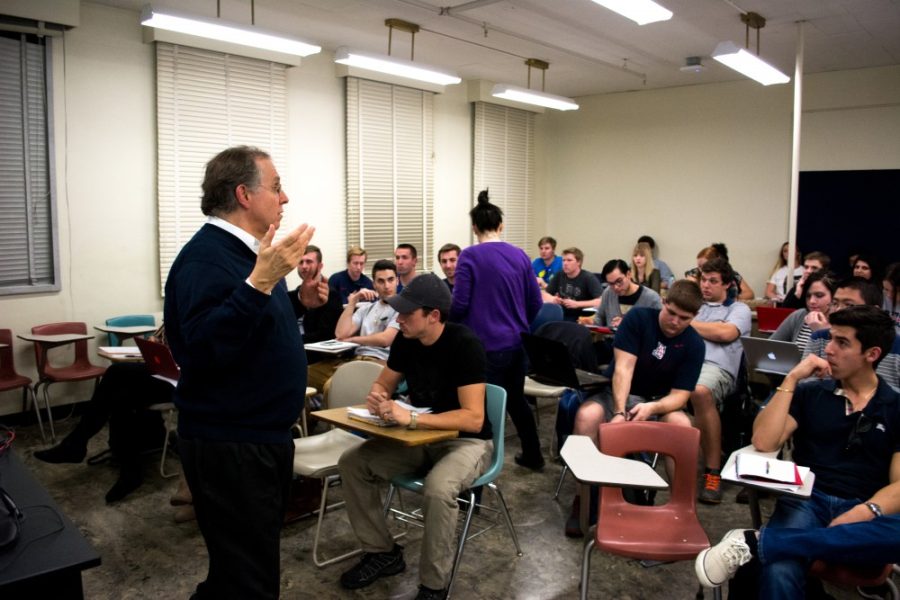Students can now learn from their peers about the best techniques to improve learning and study habits through the UA SAIL learning initiative, Student Advocates for Increased Learning.
SAIL, which began this semester as a response to the Higher Learning Commission, is a UA initiative meant to improve teaching on campus. There are two components of the learning initiative: Faculty development and students. The SAIL program focuses on the student aspect of the learning initiative.
John Pollard, associate professor of practice, said SAIL is designed to train students in the best practices for learning based on a book, “Make It Stick,” which reports on the science of successful learning.
Pollard, who has been a faculty fellow for the past 10 years, works with resident halls to help build a connection between faculty and students. He is also one of the faculty members that helped lead the efforts to create collaborative learning spaces on campus.
He said because of his involvement with those endeavors, it was natural for him to get involved with SAIL, where he helps connect fellows to other student groups in the resident halls, cultural centers and classes.
Students enrolled in the one-credit SAIL course, IA 497A, are taught which areas of cognitive and behavioral science show us how we learn. After the fellows identify the best practices of learning, they then meet with other students to pass on what they have learned. During the last few classes of the semester, time is spent discussing the impacts of the program.
Debra Tomanek, the assistant vice provost for instruction and assessment and one of the SAIL professors, said she’ll be preparing and educating students on how learning works. Students in Tomanek’s class will then go out to teach other students how to apply those strategies and skills to get better at the job of learning.
READ: UA’s Good Samaritan Policy tries to take the fear out of calling 911
Tomanek said it has been proven that someone is more likely to retain information by giving him or herself frequent self-assessments rather than reading notes over and over again. Instead of relying on professors for study materials, SAIL allows you to take charge of your own learning.
Alison Comrie, neuroscience and cognitive science senior and student coordinator for SAIL, said she goes to the classes and helps with discussions and student planning.
She said she’s found that the students who are already in the class have been doing experiments on themselves with their own habits. They have already seen results from changing their study techniques.
READ: UA athletics, UA mathematics team up to create statistics program
“Once I heard about what SAIL was going to be, I thought ‘what a great cause,’” Comrie said. There are 17 students currently enrolled in the SAIL course. The students are sent out to meet with a group three different times throughout the semester. The first two meetings include running activities and discussions, and then the last time is a debriefing.
“What I hope to see is a growing community of undergraduates who are familiar with key principles of learning and using those principles to advance their own success here and throughout their learning lives,” Tomanek said.
Follow Elizabeth O’Connell on Twitter.








